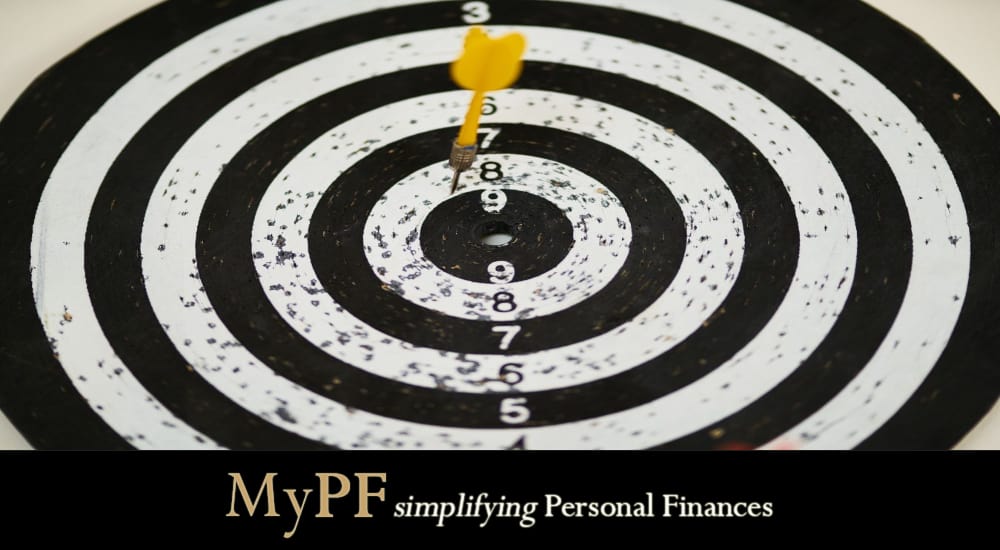6 steps to help you create the goals needed to achieve your financial aspirations and increase your probability of success.
Every working adult, regardless of their income, should plan for their finances and set money goals.
Most people worry about not having enough money. And yet, they do nothing about it. Setting your financial objectives and take full control of your money is an important step to cut down or remove the worry.
Contents
The value of setting your financial goals
Having goals can enable you to remain focused. Individuals who create specific, tangible targets will be more likely to accomplish them. Once you have set a goal, you should not be satisfied until you meet that goal. Your satisfaction relies on achieving your objectives. You dedicate your attention to fulfilling it when you have set a target and your attention turned away from many other issues.
You’re motivated to pursue it when you have set a range of targets. You want to be constructive about moving forward towards achieving that target.
Define your financial goals and make plans to achieve them.
Coming out with financial goals can seem overwhelming. Plenty of questions will swirl in your head… what areas should I investigate? Should I plan for 1-year or 5-year goals? Where and how do I start?
Well, you need not worry, especially beginners. Creating financial goals is… simple! All you need is a decent and clear frame of mind and some blank paper and pen to begin.
Ready to begin?
Stage 1: Brainstorm – Identify what you want to achieve and why.
This is your rough draft financial goals.
First, record every financial achievement you want. From that pair of extravagant shoes that caught your eyes last week to a debt-free status. The list may be a bit long at this stage. But don’t fret yet.
The more important, is the “WHY”? Why is this goal imperative to you? For example, you like to purchase those fancy shoes so you can feel your best for an up-and-coming event. Write the “why” beside each goal.
The “why” is as significant as the goal itself since it will place your goals in context and help you organise and prioritise them. If you give yourself more time to think of the “why”, you may even remove some goals. For example, the shoes above. Given time you may realise, it’s not that important, after all. You already have another pair of suitable shoes. Better utilise the fund for investing instead.
Identify all the financial objectives you want to reach most so you can create your own exciting financial goals, Don’t know where to begin? Here are some typical samples of financial goals:
- To improve credit score
- Savings for children’s higher education
- Down payment for a new house
- Live below your income
- Savings for your retirement
- Savings for an emergency fund
- Develop income generating skills
- Clear off all credit card debts
Stage 2: Transform your “unpolished” financial goals to SMART financial goals.
Take the list from stage 1 and transform each goal into a SMART goal. SMART is an abbreviation you could use as a guide to set your goals.
Creating SMART goals helps you to explain your thoughts, put your effort and use your time efficiently.
Clear and achievable goals require:
- Specific – The goal should be explicit and precise. It will not be SMART if your goal is too ambiguous.
- Measurable – Development/progress can be monitor correctly so you can determine if you have accomplished the goal.
- Achievable – You would struggle to achieve a too optimistic target. As a result, it may impair your motivation.
- Relevant – The goal you want should apply to your area of work or benefit you directly.
- Time-dependent – Finally, putting a timeline quantifies your goal further and to remain focused on your path to achieve it.
An example of a SMART Financial Goal:
“I will save RM5,000 in 1-year time i.e. by 31 Dec 2020 for the down payment of a new Myvi car. Every month, starting Jan 2020 till Dec 2020, I will save RM400 through cancelling my gym subscription (RM200 a month) and reduce buying cigarettes from 1 pack a day to 1 pack every alternate day (RM17.40 x 15 days)”
Note
Don’t put pressure on yourself with too many goals.
Having many goals is commendable, but… set a cap. You might gain far less if you do as many tasks at the same time than if you concentrate on a few. Please analyse the importance of every goal to you right now. Can you, at least for now, let any of it go? You can set further goals if you have achieved the current ones.
Stage 3: How much money do you have now? – Get a grip on your current income, expenses, assets, and liabilities
This could be a frightening step, but writing out what and how much you have is so critical. You will undoubtedly fight to achieve your financial goals if you abandon examining your revenue, liabilities, and expenditures truthfully.
So, sit back and take a long, honest overview of all your financial information:
- Find out how much money you’ve got. It could be by checking or investing accounts, like long-term investments. And, like your paid-off vehicle, it could be wrapped up in savings and physical assets.
- Test any debts you hold. Do you have a revolving balance on your credit card? Will you shell out a monthly mortgage? Do you still have your student loans lying around? Do you have a revolving balance on your credit card? Will you shell out a monthly mortgage? Do you still have your student loans lying around?
Write down: Monthly Income (after taxes), Your Investments, Your Fixed Expenses, Mortgage / Rent, Taxes, Pension, Your Debts–Write down these as the total debt and your minimum monthly payment.
All of this data will serve as the basis of your budget.
Stage 4: Prioritise your completed SMART financial goals
Most of the time, you would have more than one financial goals. With limited time, you may find it difficult to decide which goals to spend time on. Take some time to think and work to see which financial areas need more focus. Examples:
- Debt pulverisation is more significant than financing kids education.
- Putting your retirement on track is a higher priority than purchasing another vehicle.
- Get the right insurance coverage.
- Debt is costing you money and will move you further away from your objectives.
- Having a backup stash is so significant. A general guideline is having 3-4 months of your pay in a bank account for emergency usage only.
The above is just a guideline. Your priorities on goals depend heavily on your specific situation, expectations, and principles. Contact an impartial financial planner for additional personal advice.
Once you have prioritised your goals, reprint the goals register in the order of importance.
Stage 5: Achieving your goal – Create an action plan to accomplish each of the financial goals
“Our goals can only be reached through a vehicle of a plan, in which we must fervently believe, and upon which we must vigorously act. There is no other route to success.”
– Pablo Picasso
Create the baby steps needed to achieve your financial goals. This matters most in goals setting. You may dream for the sky but if you take no concrete actions, that dream, that goal remains just a dream.
For example, if you want to save RM5000 for a family holiday in a year time, the actionable element might be “every month, place RM500 in a holiday fund”.
Another example. If you wish to save for an emergency fund, a “save 10% of your monthly salary” may be a thing you can do.
Chart every move that needed to achieve a goal. What’s needed to go from point A (now) to Z (financial goal)? What about A-B? Simplify your baby steps into 3-5 action steps after you have done that.
Stage 6: Tracking your progress
There is little point in setting a goal if you will never know if you were successful. To determine the level of success that you achieve you must be able to measure your progress. When you measure your progress, you can see how you are coming along and this is a powerful motivator to help you stick with it.
Conclusion
Eventually, you will notice both the basic activities you perform on a daily / weekly basis, and the big ones you are doing now and over the years, will enable you to reach your monetary objectives.
You would likely face a few challenges now and then to meet any of your objectives. But what is necessary is not to be ideal but to be… consistent.
For example, getting whacked with an unforeseen cost of a car repair, or medical bill. It’s okay to take funds out of your emergency savings, rather than contribute. Stop beating yourself up; the fund was for that, anyway.
Always get up immediately and start tracking as soon as possible.
You May Also Like:
- 11 Financial Goals You Need to Set Immediately
- The Ultimate Bucket List
- 11 Reasons Why It Benefits You To Have a Personal Financial Plan
Are there stages you are struggling with in your journey towards achieving your financial goals? If you are unsure or doubtful, do contact a reputable financial advisor.









Leave A Comment